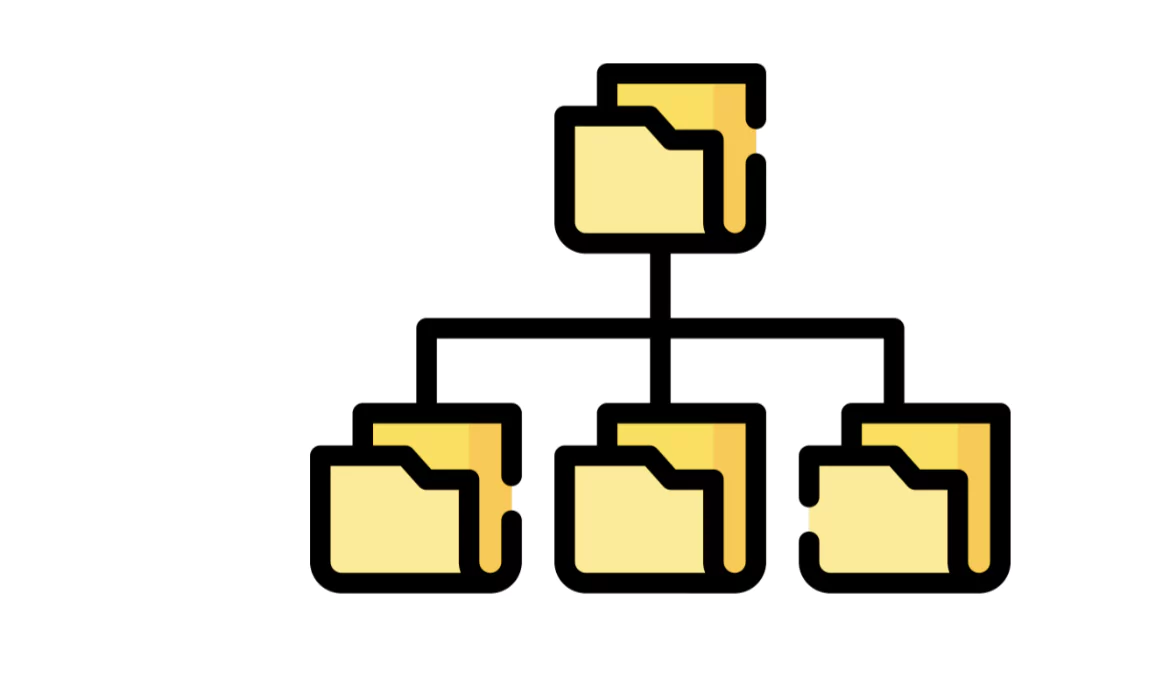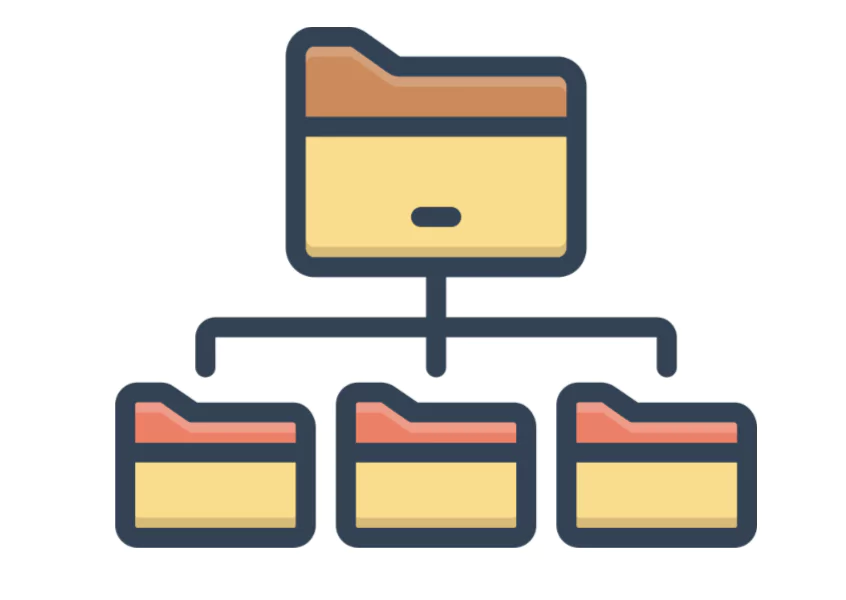File Systems are methods which keep all your storage or files and directories arranged in a proper place and manner. Ever wondered how so much data and information are stored on a simple chip or drives on a computer which can easily be accessed by you anytime you want.
Let us understand how modern file systems organisations are more efficient than the older one in the system. In this blog article, we will know the importance of file systems in operating systems.
What Are File Systems in Operating Systems?
A File system in the operating system is used to keep all the files and directories in a proper format and organised manner. It keeps all the files together, well organised and manages files directories on the device itself. The file systems being a very important element on our device can take the form of NTFS, FAT, ext4, HFS+. and more.

A local file system controls and orient storage on a local computer while an online server file system is used nowadays to store and organise files online.
File Systems Key Takeaways
- File System is a data structure used by an operating system to manage files and directories in an organised manner.
- The File System directory connects users data and information to a software oriented storage.
- A distributed file system provides file access and orientation between shared network computers.
- With file systems users can share multiple data information through storage devices.
Why Are File Systems Important In Operating Systems?

File Systems provide a structured way of organising, storing, retrieving and managing data stored on a device like hard drive, SSDs, or any external storage. Some of the key reasons why file systems are important are listed below.
Data Organisation and Storage
Data organisation is carried with file systems which follows a hierarchical structure of folder arrangement to make it easy to access. It offers efficient file management by categorising data in a file system.
Data Retrieval and Access Control
It ensures that you always have access to files through metadata, paths, and indexing which helps you reach the exact location of files on your system. It controls access to files using permissions, encryption and other methods to ensure security.
Data Security and Integrity
Data Security is offered using file systems organisation where it implements encryption and permissions to prevent any unauthorised access in the file storage of a user. It also provides features like NTFS, ext4 which can help you to recover from crashes easily.
Read more: 7 Paid Web Development Internships For College Students in 2025
Efficient Space Utilisation
This is one of the most important uses of file systems in operating systems which provide users with efficient space utilisation by allocating and deallocating storage efficiently with the help of compression and fragmentation to save storage.
Backup and Recovery
Modern file systems also provide you with the option to keep backup and sync all your important data which can help you recover all your important data in case of accidental deletion or corruption.
Working of File Systems In Operating System
File systems are used to organise and store data in a place on devices such as flash drives, magnetic tapes, or optical disks and more. There are specific conventions for naming files on a system with characters and numbers allowed. As a common practice most file systems arrange the directory into a hierarchy with the file location issued using the path provided on the top bar. In the metadata all information including details such as file size, creation date, and location of the directory can be found.

The directories often follow a tree structure in inverted form with root file directories at the top. Each file is placed in directories then subdirectories and other levels in a file system.
Logical Structure of File Systems [Users View]
It is the user view of a system which is present in a file organisation.
- Files: Collection of related data stored on a disk
- Directories: It is used to organise files hierarchically in a system.
- Paths: Paths in a file system is used to specify the file location of files using absolute or relative references.
Physical Structure [System View]
This is a system view which is displayed using sectors, file allocation tables, and journals.
- Blocks: Storage devices gets divided into fixed size blocks in the file system.
- File Allocation Tables [FAT]: It is used to store all information related to a file in metadata such as size, location, paths, and permissions available for the file on the system.
- System logs: These file systems are used to prevent data from any kind of error or corruption and hence ensuring the data is available all time to the users.
The file system working is divided into many stages which can be discussed to get you familiar with the overview of the file system.
- The first stage deals with the file creation which allocates space on the disk and updates metadata information of the file with all information such as filename, size and permissions.
- The second stage deals with organising files into available disk sectors and blocks. It maintains a table to track the file locations and store references to the location.
- File access and retrieval can be done using a user’s request to open a file and the OS will find the data from the location stored in the system.
- File modification can be done where the system updates file metadata for the users and the file is deleted to make the space available for users.
Types of File System Allocations In Operating System
File System allocation refers to how data is stored on a device with the help of different strategies in a system. Let us check the file system types below.
Contiguous File System
Each file occupies a set of contiguous blocks on disk. The OS keeps track of the starting block and the file’s length. It provides fast access to the system with simple implementation and managing property. However, it suffers from external fragmentation where free spaces are scattered in a system.
Linked File System Allocation
Each file is stored as a linked list of disk blocks where each block contains data and a pointer to the next block. In this type of file system no external fragmentation takes place with easy file growth. However, the file access is slow with pointers overhead.
Indexed File Systems
This type of file system holds a special index block which contains all pointers to the file block and the OS maintains an index table for each file in the system. With index file system allocation you can easily track system files stored location with no fragmentation and fast random access.
Types of File System Directories in Operating System
The three important types of file systems in operating systems are mentioned below.
Single Level Directory

The single level file directory is one of the simplest representations of a file system however it suffers from naming problems and grouping problems for users based on their needs. No subdirectories are included and every file belongs to the same level. It was adopted in early MS-DOS file systems.
Two Level Directories

Each user has a separate directory within a master directory. Files within a user’s directory must have unique names. It provides user isolation and better organisation of files in a system. This file system was adopted in early UNIX systems.
Multi Level File Directories

Thile file system arrangement allows multiple levels of directories or subdirectories. It is used for efficient organisation and better file management in a system. It is used in Windows, Linux and macOS systems in file organisation.
What Are Stored in File System Directories?
File systems store crucial information in its directories with attributes, location and ownership information which is managed by the operating system. Some information provided by file system directories are mentioned below.
- File name
- Type
- Address/path
- Maximum length
- Current Length
- Date Last Accessed
- Date Last Updated
- Protection information
- Owner ID
You can easily perform search, create, delete, list, rename and other operations in modern days file systems.
Learn DevOps with PW Skills
Get complete in-depth tutorials and learning programs on PW Skills through DevOps and Cloud Computing Course, completely suitable for young graduates and even professionals to upskill and build job ready skills for their portfolio.
Develop concepts of automation, deployment, and testing within this online program. Master tools like Jenkins, Ansible, Kubernetes, and more. Hurry! Enroll in this online learning program and get industry led live sessions and recorded lectures available within this course only at pwskills.com
File Systems FAQs
Q1. What is File System in Operating system?
Ans: A File system in the operating system is used to keep all the files and directories in a proper format and organised manner. It keeps all the files together, well organised and manages files directories on the device itself.
Q2. What is the use of file systems in a system?
Ans: File Systems provide a structured way of organising, storing, retrieving and managing data stored on a device like hard drive, SSDs, or any external storage.
Q3. What is the most efficient type of File System?
Ans: The indexed allocation file system provides fast access and efficient storage allocations in the file system.
Q4. What is Indexed file system allocation?
Ans: This type of file system holds a special index block which contains all pointers to the file block and the OS maintains an index table for each file in the system.

